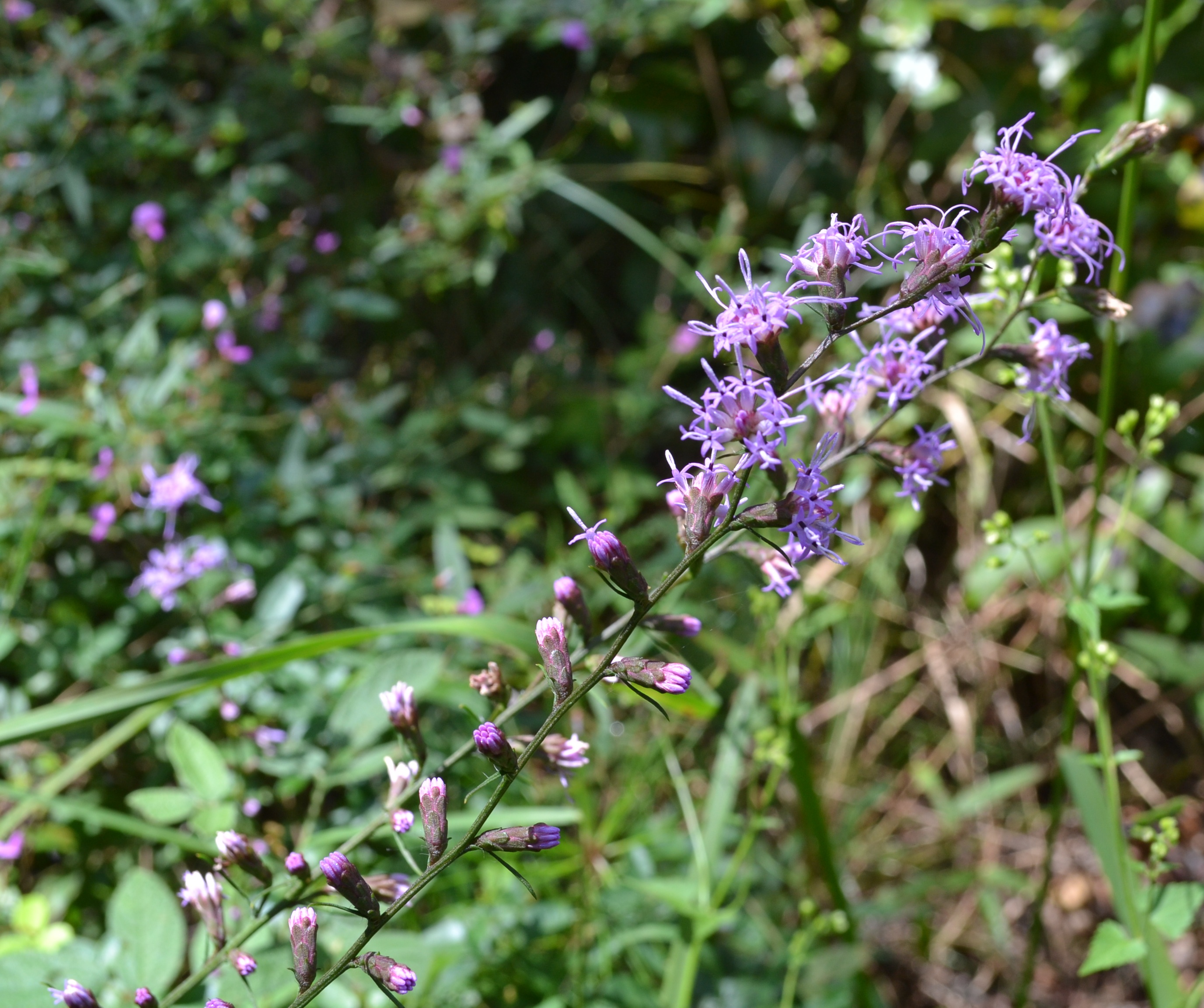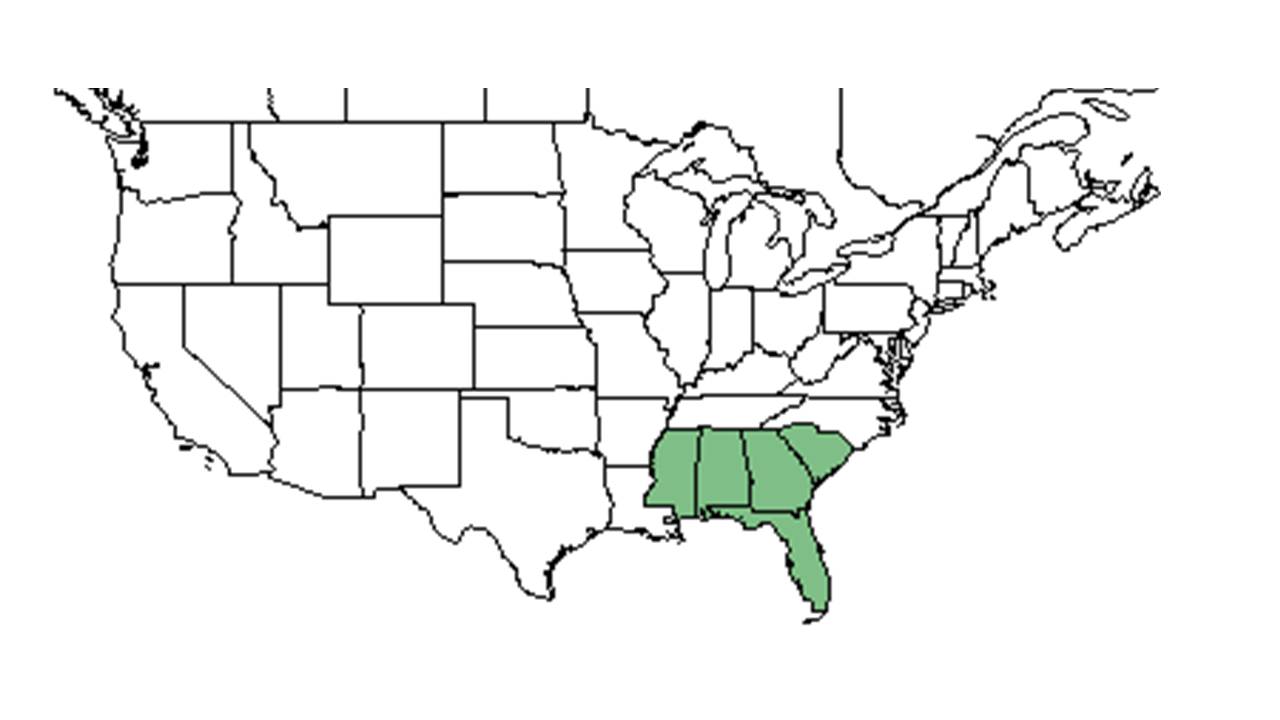Difference between revisions of "Liatris pilosa"
(→Taxonomic notes) |
Lsandstrum (talk | contribs) |
||
| Line 33: | Line 33: | ||
===Habitat=== <!--Natural communities, human disturbed habitats, topography, hydrology, soils, light, fire regime requirements for removal of competition, etc.--> | ===Habitat=== <!--Natural communities, human disturbed habitats, topography, hydrology, soils, light, fire regime requirements for removal of competition, etc.--> | ||
| − | This species is found within well drained stands of longleaf pine, sandhill slopes, and mixed hardwood-pine flatwoods as well as disturbed areas such as clear-cut slash pine plantations. <ref name="FSU Herbarium"/> It has been observed to grow in open light conditions in red, sandy clays. <ref name="FSU Herbarium"/> | + | This species is found within well drained stands of longleaf pine, sandhill slopes, and mixed hardwood-pine flatwoods as well as disturbed areas such as clear-cut slash pine plantations. <ref name="FSU Herbarium"/> It has been observed to grow in open light conditions in red, sandy clays. <ref name="FSU Herbarium"/> ''L. pilosa'' responds negatively to soil disturbance by heavy silvilculture in North Carolina.<ref>Cohen, S., R. Braham, and F. Sanchez. (2004). Seed Bank Viability in Disturbed Longleaf Pine Sites. Restoration Ecology 12(4):503-515.</ref> |
===Phenology=== <!--Timing off flowering, fruiting, seed dispersal, and environmental triggers. Cite PanFlora website if appropriate: http://www.gilnelson.com/PanFlora/ --> | ===Phenology=== <!--Timing off flowering, fruiting, seed dispersal, and environmental triggers. Cite PanFlora website if appropriate: http://www.gilnelson.com/PanFlora/ --> | ||
Revision as of 20:17, 9 July 2019
| Liatris pilosa | |
|---|---|

| |
| Photo taken by Kevin Robertson | |
| Scientific classification | |
| Kingdom: | Plantae |
| Division: | Magnoliophyta - Flowering plants |
| Class: | Magnoliopsida – Dicotyledons |
| Order: | Asterales |
| Family: | Asteraceae ⁄ Compositae |
| Genus: | Liatris |
| Species: | L. pilosa |
| Binomial name | |
| Liatris pilosa Willd. | |

| |
| Natural range of Liatris pilosa from USDA NRCS Plants Database. | |
Common names: Shaggy blazing star; Grass-leaf gayfeather; Slender gayfeather
Contents
Taxonomic notes
Synonyms: Liatris graminifolia Willdenow; L. graminifolia var. graminifolia; L. graminifolia var. lasia Fernald & Griscom; L. graminifolia var. racemosa (A.P. de Candolle) Venard; L. graminifolia var. typica; L. graminifolia var. dubia (Barton) A. Gray; Laciniaria graminifolia (Walter) Kuntze
Description
This species is abundant where it is found. [1]
A description of Liatris pilosa is provided in The Flora of North America.
Distribution
Ecology
Habitat
This species is found within well drained stands of longleaf pine, sandhill slopes, and mixed hardwood-pine flatwoods as well as disturbed areas such as clear-cut slash pine plantations. [1] It has been observed to grow in open light conditions in red, sandy clays. [1] L. pilosa responds negatively to soil disturbance by heavy silvilculture in North Carolina.[2]
Phenology
This species has been observed flowering September through October and fruiting in October. [1]
Fire ecology
This species grows in areas that are burned. [1]
Conservation and management
Cultivation and restoration
Photo Gallery
References and notes
- ↑ 1.0 1.1 1.2 1.3 1.4 Florida State University Robert K. Godfrey Herbarium database. URL: http://herbarium.bio.fsu.edu. Last accessed: June 2014. Collectors: R. Kral, Wilson Baker, R. Komarek, Robert K. Godfrey, and Chris VanDerpoel. States and Counties: Florida: Gadsden, Leon, Levy, Liberty, and Taylor. Georgia: Grady and Thomas.
- ↑ Cohen, S., R. Braham, and F. Sanchez. (2004). Seed Bank Viability in Disturbed Longleaf Pine Sites. Restoration Ecology 12(4):503-515.
